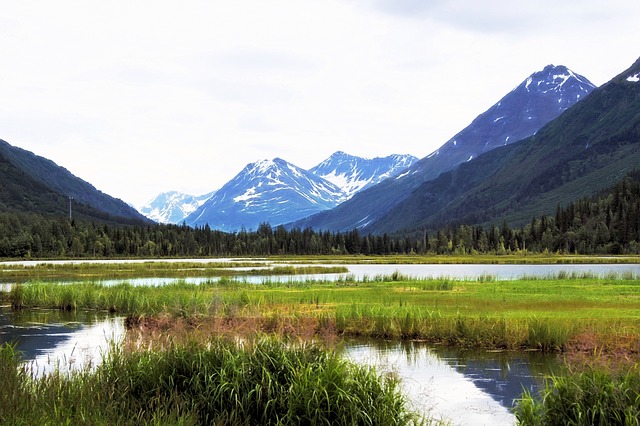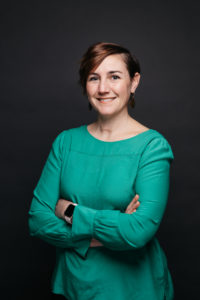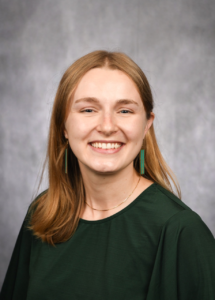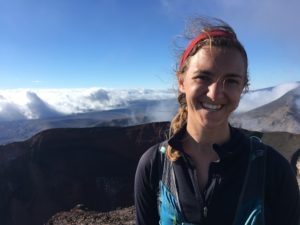Solicita ahora para formar parte de nuestra próxima grupo de Becados en Ciencia científicos comunitarios y líderes comunitarios.

Imagen de pixabay.com
The city of Anchorage, Alaska is looking to update their city-wide greenhouse gas emission inventory using a reproducible framework. This inventory will create a robust baseline that can be used to determine emission reduction progress going forward.
Anchorage is a city of about 300,000 people, located in southcentral Alaska, and is home to nearly 40% of the state’s population. Alaska is on the front lines of climate change. Anchorage residents are feeling the impacts of climate change through greater intensity wildfires, more freeze/thaw events in the winter, and damaging insects like the spruce bark beetle moving further north. Anchorage is a unique and diverse city, both in its demographics as well as its remote location.
The city adopted their Climate Action Plan (CAP) in 2019, establishing greenhouse gas emission reduction goals of 40% by 2030 and 80% by 2050. The first overarching action in the CAP is to complete a greenhouse gas inventory and update it annually to measure progress towards climate goals. The creation of the CAP included significant involvement from the community, including seven working groups to establish priorities and more than 1,500 people involved in public work sessions. The city worked to include equity as a pillar of their approach through an advisory committee and concerted efforts to engage many different neighborhoods.
In 2017, an initial community inventory was done using 2015 emission data to develop a baseline, however some gaps in data and methodology updates have been identified. The key priority of Anchorage is to update the framework for calculating a greenhouse gas emission inventory and apply this new methodology to the 2015 inventory. This framework will then be used by the city going forward to track the progress of emission reduction as laid out by the CAP. The city is involved in both ICLEI (Local Governments for Sustainability) and the Urban Sustainability Directors Network (USDN).
The city would like help determining the progress they are making towards meeting their CAP goals so that they can provide that information to the greater community, which will continue community engagement and investment in emission reductions.
Scope:
Salidas:
Future goals:
The collaboration between the community and a scientist should start as soon as possible. The project should be completed by December 31st, 2021. The city aims to hire a local consultant by July 1st, 2021 to begin work on compiling inventory data.
Anchorage es la ciudad más grande de Alaska, con 300.000 habitantes repartidos en un área del tamaño de Delaware. Parte de Dena'ina Elnena (País Dena'ina), hogar de miembros de las tribus Eklutna y Knik y de muchas nacionalidades, es un lugar con profundas raíces indígenas y una compleja historia cultural y política. Enclavada entre la ensenada de Cook y las montañas Chugach, Anchorage ha sido durante mucho tiempo el centro económico del estado y la puerta de entrada al Ártico.
Por desgracia, Anchorage también está en primera línea del cambio climático. El clima de Alaska está cambiando el doble de rápido que en el resto de EE.UU., con lluvias y nevadas más frecuentes, más plagas de insectos, glaciares en retroceso y una temporada de incendios forestales más larga. Para hacer frente a estos problemas, la administración municipal y los residentes están trabajando con socios científicos para establecer un inventario de referencia de las emisiones y crear un marco para reducirlas como parte de un Plan de Acción Climática de gran alcance.
Nos reunimos con la responsable comunitaria del proyecto, Shaina Kilcoyne, Directora de Energía y Sostenibilidad del Ayuntamiento de Anchorage, para conocer mejor los retos y oportunidades a los que se enfrenta Anchorage.
¿Cómo describiría su comunidad a alguien que nunca ha estado allí?
Hay mucho que decir sobre Anchorage. Somos únicos. Aquí es donde los nativos han prosperado y sobrevivido durante miles de años. Somos una comunidad al aire libre, y damos prioridad a los parques, senderos y zonas verdes. Hay mucha belleza natural, y espero que tengas la oportunidad de visitarnos algún día.
¿Cuáles considera que son los puntos fuertes de su comunidad?
Hay tantas cosas únicas sobre Anchorage y Alaska que probablemente podría seguir todo el día. Los residentes de Anchorage son gente resistente-nos enorgullecemos de hacer las cosas nosotros mismos y de ayudar a nuestros vecinos. Creo que es único que estemos tan al norte como Oslo, Estocolmo y Helsinki, algunos de los mayores líderes en acción climática. Eso significa que incluso una ciudad del norte como Anchorage tiene la oportunidad de ser un líder climático en Estados Unidos y en el mundo.
¿Cuáles son, en su opinión, sus retos o dificultades?
Algo que impregna nuestra vida cotidiana es que hemos dependido excesivamente de la extracción de petróleo y gas, y eso hace realmente difícil que la gente piense más allá de esas fuentes de ingresos y desarrollo económico. Esos ingresos han ayudado a construir muchas de nuestras infraestructuras, pero también han hecho muy difícil diversificar [nuestras fuentes de energía]. A Mucha gente depende directamente del sector del petróleo y el gas y ve los debates sobre el cambio climático como una amenaza. Lo entiendo, pero creo que llevamos demasiado tiempo con las anteojeras puestas. Nuestro Estado ha enterrado la cabeza en la arena y, francamente, no podemos permitirnos seguir postergándolo.
¿Qué cree que le sorprendería a la gente saber sobre su comunidad?
¡Cuántas cosas! En Anchorage se hablan más de 100 lenguas autóctonas de Alaska e internacionales-nuestra diversidad es realmente genial. Cuando creamos nuestro Plan de Acción Climática, intentamos implicar a todas las comunidades y recoger sus opiniones. Era muy importante para nosotros porque sabemos que son estas poblaciones infrarrepresentadas las que sufren las mayores consecuencias del cambio climático. Es importante que no demos por sentado que sabemos lo que es mejor para todas nuestras poblaciones.
De hecho, estamos creando un Consejo de Equidad Climática que puede ayudar a lo largo de la aplicación del Plan de Acción Climática, para que las distintas comunidades aporten su opinión sobre cuál es la prioridad, qué sería más útil, por dónde empezamos y qué nos falta. Ha ido un poco más despacio de lo que esperaba, pero no es fácil y estamos intentando hacerlo bien.
¿Qué aconsejaría a otras personas que intentan abordar un problema comunitario?
Lo que yo diría es que no tengas miedo de involucrar a tu comunidad. Cuando empezamos a hacer divulgación, me preocupaba mucho que la gente fuera a gritarme, y no fue así. Cada vez más, la comunidad empresarial y los distritos conservadores no se oponían como yo esperaba. Resulta que el ciudadano medio está viviendo los efectos del cambio climático, así que no les sorprende, aunque desconfíen de las medidas que propones. No me entusiasma que estemos viviendo el cambio climático, pero lo estamos viviendo, y como es tan pronunciado aquí es difícil negarlo. La conversación ha estado más en primera línea. La acción ha tardado en llegar, pero creo que llegará.
¿Cómo espera que sea Anchorage dentro de 20 años?
Me encanta ver los progresos que hemos hecho, así que dentro de 20 años espero que no solo veamos estos proyectos terminados, sino que también tengamos las políticas y los programas necesarios para que se conviertan en la norma. Quiero ver vehículos eléctricos y cargadores por todas partes, más energía solar, eólica y mareomotriz, y que tomemos la delantera en arquitectura avanzada para climas fríos.
También quiero que el desarrollo de la mano de obra no sólo siga el ritmo, sino que se mantenga a la vanguardia y ofrezca empleos y oportunidades de energía y tecnología avanzadas. Creo que la transición hacia una energía limpia es una oportunidad para diversificar nuestros recursos y para que prosperen las generaciones futuras.

Shaina Kilcoyne has twelve years of experience advancing energy efficiency and renewable energy policies, programs and projects in Wisconsin and Alaska. As the Energy and Sustainability Manager for the Municipality of Anchorage, Shaina works on a broad range of energy and resiliency goals. She strives to collaborate with the many city departments, community entities and organizations, and local businesses to foster partnerships across disciplines to leverage shared goals. With a focus on equity and high impact opportunities, she led the development and adoption of Anchorage’s first Climate Action Plan and recently led the development of a new clean energy financing program.

Haley Crim is an independent climate researcher working on community-centered climate action and climate and energy justice. She has previously completed greenhouse gas inventories for cities in Illinois and Maine, including one that won the city of Park Forest, IL an A+ rating from the Carbon Disclosure Project. She is passionate about working with communities and has experience as both a city sustainability officer and as a contractor for local governments. Haley is originally from Maryland and holds a BS in Ecology and Earth Systems from Bates College.

Abra Atwood (she/her) is PhD Candidate in Earth Sciences at the University of Southern California, working with Dr. Josh West. Her work currently focuses on using geochemical tools to understand water/rock interaction in the subsurface and how Earth’s “critical zone” develops over time, specifically in the steep terrain of the Nepal Himalaya. She is also interested in the impact of climate change on mountain groundwater resources, for both local and downstream communities. She grew up in rural Vermont and received her BA in Geology from Middlebury College. After, she worked as a baker in Anchorage, Alaska for several years. She is passionate about community building in many aspects of her life, from scientific collaboration to hosting elaborate community dinners.
(c) 2024 Thriving Earth Exchange